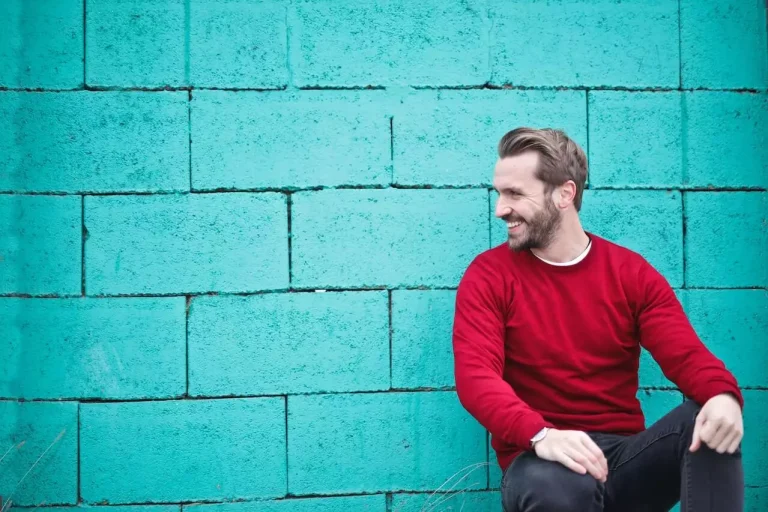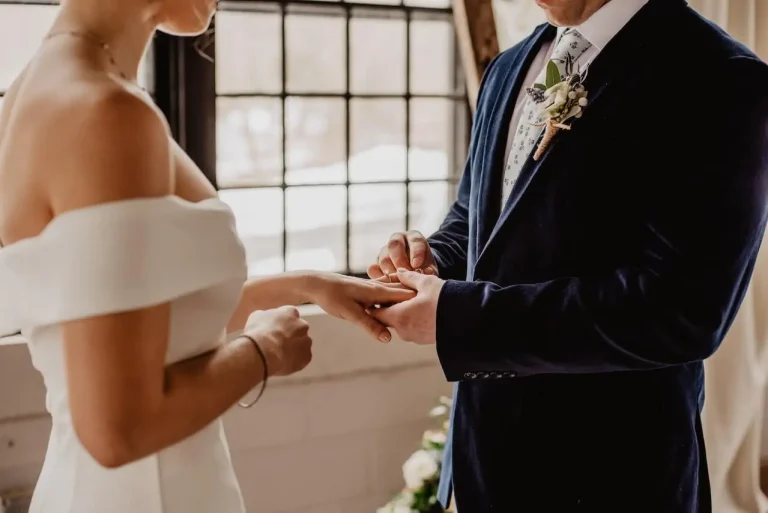Have you ever tried decoding the mysterious signals of a fearful avoidant in love? Buckle up because we’ve got 16 solid signs that’ll reveal their hidden affection!
Why Keep Reading: In this article, we’ll dive into the enigmatic world of fearful avoidant individuals and their unique way of expressing love. From the subtlest gestures to the most telling behaviors, we’ll explore:
- Their Emotional Rollercoaster
- Intimate Vulnerability
- The Space They Crave
- Communication Hints
- Efforts to Overcome Fear
- How They Prioritize You
Prepare to unravel the secrets of “Signs a Fearful Avoidant Loves You” and gain insights that could transform your relationship.
Understanding the Fearful-Avoidant Attachment Style
The way we form and maintain relationships is influenced by our attachment style, which is developed in early childhood. One common attachment style is the fearful-avoidant attachment style.

Individuals with this attachment style often experience a struggle between the desire for intimacy and the fear of getting hurt. Recognizing the signs of a fearful-avoidant attachment style is crucial in understanding their approach to love and relationships.
Signs of a Fearful-Avoidant Attachment Style
1. Difficulty Expressing Love and Affection: Fearful-avoidant individuals may find it challenging to express their emotions and may struggle with verbalizing their love and affection for their partner.
2. Fear of Intimacy: They often have an intense fear of being emotionally vulnerable and may resist getting too close in a relationship. This fear stems from past experiences or trauma that has caused them emotional pain.
3. Mixed Signals and Hot-and-Cold Behavior: Fearful-avoidant individuals may exhibit inconsistent behavior in relationships, sending mixed signals to their partners. They may alternate between being affectionate and distant, creating confusion for their partners.
4. Push-Pull Dynamics in Relationships: They may engage in a push-pull dynamic, oscillating between the desire for closeness and the need for space and independence. This can lead to a significant degree of emotional instability and uncertainty in the relationship.
5. Emotional Distance and Avoidance: Fearful-avoidant individuals may have a tendency to withdraw emotionally and physically when the relationship becomes too intense or overwhelming. They may create emotional distance as a means of self-protection.
Signs That a Fearful-Avoidant Individual Loves You
1. Gradual Opening Up and Sharing Vulnerabilities: Over time, a fearful-avoidant individual may gradually open up and become more comfortable sharing their thoughts, feelings, and vulnerabilities with you.
2. Initiating and Valuing Physical Intimacy: They may actively initiate and engage in physical intimacy as a way to connect with you on a deeper level. This demonstrates their growing trust and affection.
3. Consistency in Their Actions and Words: As their love and attachment deepen, they strive to be more consistent in their actions and words, creating a sense of security and reliability in the relationship.
4. Making Efforts to Overcome Fear and Avoidance: A fearful-avoidant individual in love may actively work on overcoming their fear and avoidance tendencies. They may seek therapy or engage in self-reflection to address their attachment issues.
5. Prioritizing Your Needs and Well-Being: When a fearful-avoidant individual loves you, they will make an effort to prioritize your needs and show genuine concern for your well-being. They may strive to create a healthy and supportive relationship environment.
Navigating a Relationship with a Fearful-Avoidant Individual
If you are in a relationship with a fearful-avoidant individual, it is essential to approach it with empathy and understanding. Here are some tips for navigating such a relationship:
1. Communicate Openly and Honestly: Foster open and honest communication to address any fears or concerns that may arise. Create a safe space where both partners can express their needs and emotions.
2. Give Them Space and Time: Respect their need for space and independence. Allow them to process their emotions and fears without pushing them further away.
3. Be Patient and Understanding: Understand that it takes time for a fearful-avoidant individual to trust and feel secure in a relationship. Patience and understanding are key in building a strong foundation.
4. Seek Professional Help if Needed: If the challenges become overwhelming or the relationship starts to suffer, consider seeking the guidance of a therapist who specializes in attachment styles and relationship dynamics.
By understanding the fearful-avoidant attachment style and recognizing the signs of love and attachment in these individuals, you can approach the relationship with empathy, patience, and a commitment to personal growth.
1. Understanding the Fearful-Avoidant Attachment Style:
– Fearful-avoidant individuals struggle with expressing love and affection due to their deep-seated fear of intimacy.
– They often send mixed signals and exhibit hot-and-cold behavior in relationships, making it challenging to gauge their true feelings.
– Emotional distance and avoidance are common traits of individuals with this attachment style.
2. Signs of a Fearful-Avoidant Attachment Style:
– Gradually opening up and sharing vulnerabilities is an indication that a fearful-avoidant individual is developing feelings for you.
– Initiating and valuing physical intimacy shows that they are overcoming their fear and discomfort.
– Consistency in their actions and words demonstrates their growing emotional connection and commitment.
– Making efforts to overcome fear and avoidance signifies their willingness to work on the relationship.
– Prioritizing your needs and well-being indicates that your partner is invested in the relationship.
3. Navigating a Relationship with a Fearful-Avoidant Individual:
– Communication should be open and honest to address fears and concerns effectively.
– Giving them space and time allows them to manage their emotions and feelings.
– Patience and understanding are key as they may struggle with trust and vulnerability.
– Seeking professional help can provide guidance and support in navigating the challenges associated with a fearful-avoidant attachment style.
16 Solid Signs a Fearful Avoidant Loves You
Here are 16 solid signs that a fearful avoidant loves you:
- Mixed Emotions: They experience a rollercoaster of emotions, swinging between closeness and distance, as they grapple with their attachment fears.
- Vulnerability: They open up about their deepest fears and insecurities, revealing their trust in you.
- Need for Space: They value alone time but eventually return, showing they’re committed to the relationship.
- Quality Communication: They make an effort to communicate their feelings, even if it’s challenging for them.
- Conquering Fear: They work on their attachment issues and actively seek growth for the sake of your relationship.
- Prioritizing You: They put in effort to make you a priority in their life, even when it’s difficult.
- Physical Affection: They become physically affectionate, demonstrating their comfort with intimacy.
- Dependability: They become more reliable and consistent in their actions and promises.
- Supportive Actions: They support you in both words and actions, showing they care about your well-being.
- Sharing Dreams: They include you in their future plans, indicating a desire for a lasting connection.
- Acceptance: They embrace your imperfections and quirks, showing deep affection.
- Jealousy: They may exhibit jealousy when they fear losing you to someone else.
- Protectiveness: They show a protective instinct when it comes to your safety and happiness.
- Apologies: They genuinely apologize when they’ve hurt you, demonstrating their remorse.
- Quality Time: They make an effort to spend quality time with you, reinforcing their affection.
- Long-Term Commitment: They express a desire for a long-term, stable relationship with you, despite their attachment struggles.
These signs can help you understand and navigate a relationship with a fearful avoidant partner.
Understanding the Fearful-Avoidant Attachment Style
The fearful-avoidant attachment style is characterized by a fear of intimacy and rejection. People with this style struggle to form lasting relationships. It is important to understand this style to build healthier connections with others.
1. Attachment Patterns: People with a fearful-avoidant attachment style often experienced inconsistent caregiving during their early years. This has led to a conflict between their desire for connection and fear of getting hurt.
2. Fear of Intimacy: People with this style find it hard to fully trust others. They avoid emotional intimacy to protect themselves from potential hurt or rejection. This fear can hinder deep and meaningful relationships.
3. Fear of Rejection: Alongside the fear of intimacy, individuals with this style also fear being abandoned or not being enough for their partner. This fear causes them to create emotional distance in relationships.
4. Push-Pull Dynamics: The fearful-avoidant attachment style is characterized by a push-pull dynamic. Individuals may desire closeness but then feel overwhelmed by it. They may seek reassurance and then push their partner away. These conflicting behaviors can create confusion and frustration in relationships.
5. Emotional Regulation Challenges: People with a fearful-avoidant attachment style struggle with regulating their emotions. They suppress or deny their own emotions, making it hard to express needs and seek support from their partners. This leads to difficulties in communication and understanding.
6. Healing and Growth: Despite the challenges, it is possible to develop more secure attachment patterns through self-reflection and therapy. Healing involves understanding and addressing past traumas or attachment wounds, cultivating self-awareness, and learning healthy communication and emotional regulation skills.
Understanding the fearful-avoidant attachment style is crucial for individuals with this style and their partners. By recognizing the patterns and challenges, individuals can work towards growth, healing, and building healthier relationships.
Signs of a Fearful-Avoidant Attachment Style
Discovering the signs of a fearful-avoidant attachment style can shed light on the dynamics of relationships.
From difficulty expressing love and affection to the push-pull dynamics that arise, this section uncovers the nuances of this attachment style.
Dive into the fear of intimacy, mixed signals, emotional distance, and avoidance that often come with being in a relationship with a fearful-avoidant individual. Brace yourself for insightful observations and relatable experiences.
Difficulty Expressing Love and Affection
Difficulty expressing love and affection can pose a challenge for individuals with a fearful-avoidant attachment style. These individuals may find it hard to openly communicate their emotions and struggle to offer love and affection to their partners.
Here are key points to consider when it comes to the challenge of expressing love and affection in someone with a fearful-avoidant attachment style:
1. Fear of Vulnerability: Fearful-avoidant individuals have an underlying fear of emotional intimacy and vulnerability. This fear stems from past traumas or emotional wounds, making it difficult for them to trust and open up to others.
2. Emotional Withdrawal: Fearful-avoidant individuals often withdraw emotionally when faced with closeness or the potential deepening of a connection. They distance themselves, become distant, or create barriers in an attempt to protect themselves from rejection or hurt.
3. Mixed Signals: Fearful-avoidant individuals frequently send mixed signals in their relationships. They may display warm and affectionate behavior at times, only to later withdraw and create emotional distance. This inconsistency can be confusing and frustrating for their partners.
4. Difficulty with Affectionate Gestures: Expressing love and affection through physical touch, hugs, or verbal expressions can be challenging for those with a fearful-avoidant attachment style. They may feel uneasy or anxious about displaying affection due to the fear of dependency or being overwhelmed by their partner.
5. Fear of Rejection: The fear of rejection is a significant factor in the struggle to express love and affection. Fearful-avoidant individuals may withhold their emotions and affection due to the fear of eventual rejection or abandonment by their partner.
Navigating a relationship with a fearful-avoidant individual necessitates understanding, patience, and open communication. Partners must create a safe and non-judgmental space, allowing them to gradually open up and express their emotions at their own pace.
Seeking professional help, such as couples therapy or individual counseling, can also provide valuable support in addressing the challenges that arise from the difficulty of expressing love and affection.
To support a fearful-avoidant partner in overcoming their challenges, it is crucial to cultivate a relationship based on trust, empathy, and understanding. Encouraging open dialogue, providing reassurance, and offering emotional support can help create an environment where they feel comfortable gradually expressing their love and affection.
Fear of Intimacy
The fear of intimacy is a common challenge faced by individuals with a fearful-avoidant attachment style. This particular style is characterized by a fear of both closeness and distance in relationships.
Understanding and addressing this fear is essential when navigating a relationship with someone who has a fearful-avoidant attachment style. Here are some helpful insights to consider:
1. Avoidance of Emotional Intimacy: Individuals with a fearful-avoidant attachment style often struggle with emotional intimacy due to their deep-seated fear of getting hurt or rejected. Opening up and sharing their feelings, even with their closest partners, can be extremely difficult for them.
2. Trust Issues: The fear of intimacy can also stem from a lack of trust in others. Fearful-avoidant individuals may have experienced past traumas or betrayals that make it challenging for them to fully trust and be vulnerable in relationships.
3. Fear of Losing Independence: People with a fearful-avoidant attachment style highly value their independence and dread the possibility of losing it in a close relationship. They worry that becoming intimate with someone will compromise their sense of self and personal freedom.
4. Mixed Signals and Hot-and-Cold Behavior: Owing to their deep-rooted fear of intimacy, individuals with a fearful-avoidant attachment style may exhibit mixed signals and engage in hot-and-cold behavior within relationships. They might alternate between showing affection and then suddenly withdrawing to create emotional distance.
5. Strategies for Avoiding Intimacy: Fearful-avoidant individuals often employ various strategies to maintain emotional distance. These can include avoiding deep conversations, keeping interactions light and superficial, or participating in activities that serve as distractions from emotional intimacy.
Understanding the fear of intimacy in a person with a fearful-avoidant attachment style is crucial for establishing a healthy and fulfilling relationship with them. It requires patience, open communication, and a willingness to provide reassurance and support. By creating a safe and understanding environment, it is possible to navigate the challenges associated with this attachment style and gradually cultivate a deeper level of intimacy over time.
Mixed Signals and Hot-and-Cold Behavior
Mixed signals and hot-and-cold behavior are common sources of frustration and confusion in relationships. These behaviors are often exhibited by individuals with a fearful-avoidant attachment style.
It is important to understand the following aspects of mixed signals and hot-and-cold behavior in relationships:
1. Inconsistent behavior: Individuals with a fearful-avoidant attachment style tend to alternate between being warm and distant. This inconsistency leaves their partners uncertain about their intentions and emotions.
2. Fear of intimacy: Mixed signals and hot-and-cold behavior stem from a deep fear of emotional intimacy. Individuals with a fearful-avoidant attachment style desire closeness but are apprehensive about the potential for emotional hurt or rejection. Consequently, they tend to push their partners away.
3. Internal conflict: Fearful-avoidant individuals experience conflicting emotions between their desire for closeness and their fear of being hurt. This inner conflict often leads to mixed signals as they navigate their own emotions and vulnerabilities.
4. Past trauma: Many individuals with a fearful-avoidant attachment style have experienced traumatic events or difficult relationships that have shaped their fear of intimacy. These past experiences cause them to send mixed signals as a means of self-protection.
5. Need for reassurance: Fearful-avoidant individuals require reassurance and patience from their partners. Partners should aim to create a safe and understanding environment where fears and insecurities can be openly expressed without judgment.
Understanding mixed signals and hot-and-cold behavior in individuals with a fearful-avoidant attachment style is essential for successfully navigating relationship challenges. Open and honest communication, along with providing them the necessary space and time, is crucial.
Being patient and understanding is key. Seeking professional help or therapy can also be beneficial in addressing underlying fears and patterns within the relationship.
Research suggests that individuals with a fearful-avoidant attachment style are more likely to encounter relationship difficulties and emotional distress compared to those with secure or other attachment styles.
Push-Pull Dynamics in relationships – where love feels like a game of emotional tug-of-war, and the rope is made of mixed signals, confusion, and a sprinkle of fear.
Push-Pull Dynamics in Relationships
Push-pull dynamics in relationships, also known as push-pull behavior, refer to the pattern where one person alternates between pulling their partner closer and pushing them away.
This behavior can cause confusion, emotional instability, and frustration for both individuals involved. When dealing with push-pull dynamics in relationships, there are several key aspects to consider:
1. Mixed signals and inconsistency: One characteristic of push-pull dynamics is the inconsistency in behavior and emotions. Individuals may exhibit hot-and-cold behavior, constantly switching between showing affection and withdrawing from the relationship.
2. Fear of intimacy: Individuals with a fearful-avoidant attachment style often struggle with a fear of intimacy. They may have deep-seated concerns about getting too close or being vulnerable, which leads them to create distance in the relationship when things become intense.
3. Emotional rollercoaster: The push-pull behavior can create an emotional rollercoaster for both partners. The constant fluctuations in closeness and distance can lead to feelings of insecurity, anxiety, and frustration.
4. Need for autonomy: People who exhibit push-pull dynamics usually have a strong need for independence. They may feel overwhelmed by the perceived loss of self and use pushing away as a means to regain freedom.
5. Communication challenges: Push-pull dynamics can create difficulties in communication. It is crucial for both partners to openly express their needs, fears, and concerns. Clear and honest communication can help navigate the push-pull cycle.
Dealing with push-pull dynamics in relationships can be challenging, but there are strategies that can help:
– Establish clear boundaries and expectations in the relationship to create security and consistency.
– Encourage open and honest communication to address fears or concerns.
– Allow space and time for the individual with the fearful-avoidant attachment style to process emotions and regain autonomy.
– Show patience and understanding, recognizing that the push-pull behavior often stems from past experiences and fears.
– Consider seeking professional help, such as couples therapy or individual counseling, to address underlying attachment issues and develop healthier relationship dynamics.
By understanding and addressing push-pull dynamics in relationships, both partners can work towards creating a more stable and fulfilling connection. It takes effort and patience, but with open communication and a commitment to personal growth, it is possible to overcome these challenges and build a strong and healthy relationship.
Emotional Distance and Avoidance
Emotional distance and avoidance can play a significant role when in a relationship with someone who has a fearful-avoidant attachment style.
To navigate the relationship effectively, it is important to understand this aspect. Here are some key points to consider:
1. Emotional withdrawal: Individuals with fearful-avoidant attachment tend to withdraw emotionally when overwhelmed or scared. They may be distant, unresponsive, or shut down emotionally. Recognize and respect their need for space during these moments.
2. Fear of intimacy: Fearful-avoidant individuals struggle with a fear of intimacy and vulnerability. They may push their partners away when relationships become too close or intense. Give them reassurance and patience while they work through their anxieties.
3. Avoidance of conflict: Emotional distance can also arise from their tendency to avoid conflict. Fearful-avoidant individuals may avoid addressing issues directly, leading to unresolved tension and distance in the relationship. Encourage open and honest communication to bridge this gap.
4. Difficulty expressing emotions: Due to their fear of rejection or abandonment, individuals with a fearful-avoidant attachment style may find it challenging to express their emotions openly. Encouraging a safe and non-judgmental environment can help them open up and share their feelings.
5. Self-protective behaviors: Emotional distance and avoidance serve as protective mechanisms for fearful-avoidant individuals. They fear getting hurt or being dependent on others. Respect their emotional boundaries while encouraging them to explore and challenge their fears.
Navigating a relationship with a partner who exhibits emotional distance and avoidance requires patience, understanding, and effective communication. Create a supportive and secure environment, allowing them to gradually overcome their fears.
Seeking professional help can be valuable if emotional distance and avoidance become significant obstacles within the relationship. By acknowledging and addressing these challenges, couples can work towards building a healthier and more fulfilling connection.
Unlocking the heart of a fearful-avoidant: signs that they’re risking their emotional armor for you.
Signs That a Fearful-Avoidant Individual Loves You
When it comes to recognizing the signs that a fearful-avoidant individual loves you, certain behaviors can provide valuable insights.
From gradually opening up and sharing vulnerabilities to initiating and cherishing physical intimacy, this section explores the key indicators of affection from a fearful-avoidant partner.
We’ll also discuss the importance of consistency between their actions and words, their efforts to overcome fear and avoidance, as well as their ability to prioritize your needs and well-being.
Get ready to decode the subtle expressions of love from a fearful-avoidant perspective.
Gradual Opening Up and Sharing Vulnerabilities
Gradual opening up and sharing vulnerabilities is essential in building a relationship with a fearful-avoidant individual. It may be challenging for them to express their emotions and fears, but as trust grows, they will slowly reveal their vulnerable side.
Consider the following points when it comes to opening up and sharing vulnerabilities with a fearful-avoidant individual:
1. Trust-building process: Building trust is crucial for a fearful-avoidant individual. By gradually opening up, they are showing that they trust you more and feel safe and comfortable enough to share their vulnerabilities.
2. Taking small steps: Opening up can start with small disclosures or personal anecdotes. It could involve sharing childhood experiences or discussing fears. As the relationship progresses, they may feel more comfortable to share intimate thoughts and emotions.
3. Patience and understanding: It is important to be patient and understanding during this process. Avoid pressuring them to open up or share vulnerabilities before they are ready. Give them the space they need to feel comfortable and respected.
4. Active listening: Actively listen to their stories and experiences without judgment. Show empathy and understanding when they share their vulnerabilities. This will strengthen the bond of trust and encourage further open communication.
5. Reciprocity in sharing: Encourage reciprocal sharing by sharing your own vulnerabilities. This creates a safe environment for the fearful-avoidant individual to feel more comfortable and open up further.
Remember that every individual is unique, and the pace at which they open up may vary. Respect their boundaries and avoid rushing the process. Gradual opening up and sharing vulnerabilities can foster a deeper connection and understanding in your relationship with a fearful-avoidant individual.
Pro-tip: Open and honest communication is crucial in navigating a relationship with a fearful-avoidant individual. Create a safe space where they can express themselves comfortably, and be patient and understanding as they gradually reveal their vulnerabilities.
Getting close physically might be challenging for them, but when a fearful-avoidant individual finally embraces physical intimacy with you, it’s like small steps towards a big warm hug.
Initiating and Valuing Physical Intimacy
When it comes to a fearful-avoidant individual showing love, initiating and valuing physical intimacy is crucial. Here are some steps to consider:
1. Create a safe space: Ensure the fearful-avoidant individual feels safe and comfortable in their physical space by establishing trust and open communication.
2. Start with non-threatening gestures: Begin with holding hands, hugging, or gentle touches on the arm or back to build trust and connection.
3. Respect personal boundaries: Pay attention to cues and signals, and communicate openly about what the individual is comfortable with in terms of physical intimacy.
4. Gradually increase physical intimacy: As trust and comfort grow, gradually increase physical intimacy, such as kissing, cuddling, or more intimate acts. Respect their pace and only move forward when both partners are ready.
5. Communicate about desires and preferences: Have open discussions about desires, preferences, and boundaries related to physical intimacy. This ensures a mutually satisfying experience.
Remember, each individual is unique, and what works for one person may not work for another. Open and honest communication is crucial for both partners to feel valued and respected.
When navigating a relationship with a fearful-avoidant individual, seeking professional help from a therapist or counselor specializing in attachment styles can be helpful. They can provide guidance and support in understanding and addressing any challenges that arise.
Consistency in their actions and words? As rare as finding a unicorn in a desert.
Consistency in Their Actions and Words
Consistency in their actions and words is crucial when it comes to understanding the emotions of a fearful-avoidant individual.
When their actions and words are in sync, it demonstrates their authenticity, reliability, and dedication to the relationship. Here are a few ways to observe their consistency:
– Follow through on promises and commitments. A fearful-avoidant individual who loves you will honor their word and fulfill their promises.
– Be dependable and reliable. Consistent behavior indicates that they can be trusted and relied upon for support.
– Engage in open and honest communication about their feelings. A fearful-avoidant individual who loves you will not engage in mind games or send mixed signals, but instead express their emotions directly.
– Display consistent affection and care. Through their actions, they consistently demonstrate love and affection, regardless of whether it’s through small gestures or grand acts of kindness.
– Prioritize your needs and well-being. Consistent actions and words imply that they consistently prioritize your happiness and take your needs into consideration. They genuinely care about your well-being.
It’s important to note that developing and maintaining consistency may take time for a fearful-avoidant individual. They might have a fear of intimacy and a tendency to withdraw. If they are actively working on being consistent, it’s a positive indication for the relationship.
Their consistency may not be flawless, but they are genuinely making efforts to overcome their fears and insecurities.
Remember, every individual is unique, and attachment styles can vary. Open and honest communication is imperative for understanding your partner’s needs, fears, and concerns. Seeking professional help can be beneficial in navigating the complexities of a relationship with a fearful-avoidant individual.
Taking small steps towards vulnerability helps them conquer their fear and embrace love’s tantalizing grip.
Making Efforts to Overcome Fear and Avoidance
Making efforts to overcome fear and avoidance in a relationship with a fearful-avoidant individual is crucial. Here are some key steps to take:
1. Acknowledge their fears and insecurities: Recognize that your partner’s fear and avoidance come from deep-seated anxieties and past experiences. Show empathy and understanding towards their emotions without judgment.
2. Encourage open and honest communication: Create a safe space for your partner to express their fears and concerns. Encourage them to share their thoughts and emotions, and actively listen. Engage in open and non-defensive dialogue to build trust.
3. Offer reassurance and support: Reassure your partner that you are committed to the relationship and willing to work through challenges together. Let them know that their feelings are valid and that you are there to support them.
4. Take things at their pace: Understand that making efforts to overcome fear and avoidance can be a gradual process for fearful-avoidant individuals. They may need time and space to process their emotions. Respect their boundaries and avoid pressuring them. Allow them to set the pace for intimacy and vulnerability.
5. Encourage professional help if needed: If your partner’s fear and avoidance negatively impact their well-being and the relationship, suggest seeking professional help together. Making efforts to overcome fear and avoidance through therapy can provide guidance and tools to address underlying issues.
By taking these steps, you can help your partner overcome fear and avoidance and create a more secure relationship. Remember, making efforts to overcome fear and avoidance may require patience and understanding.
Studies have shown that individuals with fearful-avoidant attachment styles can experience significant improvements in their relationships and overall well-being through therapy and a supportive partner.
Prioritizing your needs and well-being in a relationship is like finding a unicorn – rare but oh so magical.
Prioritizing Your Needs and Well-Being
When in a relationship with a fearful-avoidant individual, it is essential to prioritize your needs and well-being. Here are some natural ways to incorporate them:
1. Openly and honestly communicate your needs. Take the time to express your desires and expectations in the relationship. Clearly communicate your need for support, affection, and quality time. By doing this, you help your partner understand what you require and can work together towards meeting those needs.
2. Establish and reinforce boundaries that deserve respect. It is important to set clear limits and ensure that your partner understands and respects them. This will create a sense of safety and security in the relationship.
3. Take good care of yourself. Make your well-being a priority by attending to your physical, mental, and emotional needs. Dedicate time to activities that bring you joy and help rejuvenate your energy. Engaging in such activities will not only boost your well-being but also enhance your overall relationship satisfaction.
4. Seek support from trusted loved ones. Dealing with a relationship involving a fearful-avoidant individual can be challenging. In times of difficulty, reach out to family members or friends you trust for guidance and support. They can offer valuable insights and lend a listening ear when you need it.
5. Consider the option of couples therapy. If the challenges in your relationship feel overwhelming, seeking professional help can make a significant difference. Couples therapy provides a safe space for both you and your partner to address concerns, improve communication, and strengthen the relationship.
Remember, prioritizing your needs and well-being does not mean neglecting your partner’s needs. Strive for a balance that allows both individuals to thrive. By prioritizing yourself, you create a healthier and more fulfilling dynamic with your fearful-avoidant partner.
Navigating a Relationship with a Fearful-Avoidant Individual
In navigating a relationship with a fearful-avoidant individual, it’s crucial to find a delicate balance between open communication, giving them the necessary space and time, and maintaining patience and understanding.
This section will offer insights into these key aspects, along with the importance of seeking professional help when necessary. So, let’s dive in and discover the secrets to building a strong and fulfilling connection with a fearful-avoidant partner.
Communicate Openly and Honestly
Communicating openly and honestly is crucial when involved in a relationship with a fearful-avoidant individual. Incorporating these effective communication strategies can help:
1. Be open about your emotions: Use “I” statements to express how you feel and the thoughts and concerns you have. For instance, you can say, “I feel hurt when you emotionally withdraw.”
2. Practice active listening: Dedicate your complete attention to your partner when they communicate. Avoid interruptions and try to understand their perspective. Reflecting on their words shows your engagement.
3. Foster a safe environment: Encourage your partner to share without any judgment or criticism. Validate their emotions and assure them of your support. A secure space creates an atmosphere of honest communication.
4. Validate their experiences: Fearful-avoidant individuals struggle with trust and vulnerability. Acknowledge their feelings and experiences to help them feel heard and understood. For example, you can say, “It is understandable that you feel scared to open up due to past experiences.”
5. Be patient and empathetic: Understand that communication may be challenging for your partner. Give them time and space to feel comfortable sharing. Display empathy by acknowledging their fears and offering reassurance.
6. Utilize non-verbal communication: Pay attention to your partner’s body language and tone of voice to comprehend their emotions. Responding to their non-verbal cues shows that you value and understand them.
7. Resolve conflicts constructively: Address conflicts openly and honestly. Avoid blaming and instead focus on finding solutions together. Use phrases such as “Let’s work together to find a compromise” or “How can we resolve this issue in a way that meets both our needs?”
Remember, open and honest communication requires effort from both partners. Build trust and establish a safe space that encourages vulnerability. By communicating openly and honestly, you can foster understanding and strengthen your relationship with a fearful-avoidant individual.
Give Them Space and Time
In a relationship with someone who has a fearful-avoidant attachment style, it is important to give them space and time to process their emotions and thoughts. Here are some strategies to consider:
1. Respect their need for alone time: Fearful-avoidant individuals often require time alone to recharge and process their emotions. Respect their boundaries and avoid pressuring them to constantly be together.
2. Avoid being clingy or demanding: Giving them space means understanding that they may need time apart to feel safe in the relationship. Avoid being clingy or demanding their constant attention, as this can trigger feelings of suffocation or fear.
3. Encourage open communication: Let them know you are there for them and encourage them to communicate their needs and concerns openly. This creates a safe environment for them to express themselves without judgment or overwhelm.
4. Be patient: Fearful-avoidant individuals may push you away at times. Be patient and understanding, acknowledging that their behavior is not a reflection of your worth or their feelings for you. Give them the time they need to work through their fears and come back to the relationship when they are ready.
5. Support their self-care routines: Fearful-avoidant individuals prioritize self-care to maintain balance and manage their emotions. Encourage and support their self-care practices, whether it’s hobbies, exercise, or alone time. This reinforces the importance of self-care and allows them to take the necessary time and space they need.
Remember, every relationship is unique. By giving them space and time, you allow them to process their emotions and fears at their own pace, fostering a healthier and more secure bond.
Be patient and understanding, because navigating a relationship with a fearful-avoidant individual is like untangling headphones in the dark.
Be Patient and Understanding
When engaging with a fearful-avoidant individual in a relationship, it is crucial to exhibit patience and understanding. This attachment style can present difficulties for them in terms of opening up emotionally. Here are some suggestions for how to navigate this situation in a natural and authentic manner:
1. Take the time to give them space. Fearful-avoidant individuals frequently require alone time in order to process their emotions and thoughts. Respect their need for personal space and avoid pressuring them to reveal themselves too soon.
2. Demonstrate empathy and understanding. Put yourself in their position and recognize that their apprehension about intimacy stems from previous experiences. Exhibiting empathy can establish a safe environment for them to share their feelings.
3. Be an attentive listener. Allow them the opportunity to express their fears, concerns, and insecurities without passing judgment or interrupting. Active listening plays a crucial role in building trust and encouraging them to become more open.
4. Foster open and honest communication. Clearly express your own emotions and needs while remaining receptive to their perspective. Honest and open communication can strengthen the bond between you.
5. Remember not to take their fear and avoidance personally. Keep in mind that their behavior is not a reflection of your worth or desirability. It is simply their way of safeguarding themselves emotionally.
Exhibiting patience and understanding is vital when navigating a relationship with a fearful-avoidant individual. Providing them with the necessary time, space, empathy, and open communication can cultivate a secure and trusting connection.
Remember, attachment styles are shaped by past experiences, and with patience and understanding, a healthy and fulfilling relationship can be established.
Seek Professional Help if Needed
When dealing with a fearful-avoidant individual in a relationship, it is important to consider seeking professional help. Here are some steps to follow:
1. Recognize the signs: If your relationship with a fearful-avoidant individual is causing persistent distress and affecting your emotional well-being, seek professional help to find a resolution.
2. Research and find appropriate resources: Look for licensed therapists or counselors who specialize in attachment styles or relationship dynamics. Seek recommendations from trusted sources or utilize online databases to find professionals with expertise in this area.
3. Reach out and make an appointment: Contact potential professionals and schedule an appointment. Communicate openly about your concerns and provide relevant information about your relationship dynamics.
4. Attend therapy sessions regularly: Commit to consistent therapy sessions to address the challenges specific to your relationship with a fearful-avoidant individual. Be open-minded and actively engage in the therapeutic process.
5. Participate in individual and couples therapy: Consider including your partner in couples therapy sessions. This allows for a comprehensive exploration of the dynamics at play and provides a safe space for open communication and problem-solving.
6. Implement strategies and recommendations: Actively implement the guidance and strategies provided by the professional. These recommendations are designed to improve communication, build trust, and enhance overall relationship satisfaction.
7. Monitor progress and reassess: Continually assess your progress in therapy. Evaluate the effectiveness of the implemented strategies and communicate any challenges or concerns to your therapist. Regular assessment ensures that you are on the right track and aligned with your goals.
Remember, seeking professional help is not a sign of weakness but a proactive step towards improving your relationship. Professionals possess the expertise and tools to guide you through the challenges specific to a fearful-avoidant attachment style.
Prioritize your well-being and relationship satisfaction, and professional assistance can provide the support needed to overcome these obstacles.
Some Facts About Signs a Fearful-Avoidant Loves You:
- ✅ Fearful-avoidant individuals struggle with trust and affection, but they are not incapable of love. (Source: Our Team)
- ✅ Signs that a fearful-avoidant loves you include making the first move and opening up about their fears and concerns. (Source: Our Team)
- ✅ Fearful-avoidants may not always push you away from loving gestures, showing that they care. (Source: Our Team)
- ✅ A fearful-avoidant partner will be there for you in times of need, providing support and comfort. (Source: Our Team)
- ✅ Sharing secrets, inviting you to their home, and introducing you to friends and family are signs that a fearful-avoidant is developing deeper feelings for you. (Source: Our Team)
Frequently Asked Questions
How can I tell if my fearful-avoidant partner loves me?
Signs that a fearful-avoidant partner loves you include making the first move, opening up about what’s bothering them, not pushing you away from loving gestures, being there for you in times of need, sharing secrets, inviting you to their home and introducing you to friends and family, talking about their past, discussing mundane topics, showing vulnerability, talking about personal preferences, communicating non-verbally in an awkward way, allowing you to violate their space, sharing a hobby with you, and saying “I love you” (even if they don’t say it often).
How can I improve communication with my fearful-avoidant partner?
Improving communication with a fearful-avoidant partner involves creating a safe environment, respecting their independence and space needs, reframing statements in a positive way, validating their feelings, and being emotionally independent.
What can I do to have a happy relationship with a fearful-avoidant partner?
To have a happy relationship with a fearful-avoidant partner, it is important to be patient, provide positive reinforcement when they show signs of intimacy, respect their need for independence and alone time, and learn to decipher the ways in which they show love.
Can a fearful-avoidant partner overcome their fear of intimacy?
Yes, with support and patience, fearful-avoidant partners can embrace emotional intimacy. Attachment styles are not fixed, and individuals can work towards deepening their connection and building healthy relationships.
How can I attract a fearful-avoidant partner and make them feel safe?
To attract a fearful-avoidant partner and make them feel safe, it is important to not try to control them, respect their need for independence and space, read their body language, validate their feelings, and tap into their Hero Instinct.
Are there relationship experts who can provide guidance for navigating relationships with avoidant partners?
Yes, Relationship Hero is a resource that offers support and guidance for understanding and improving relationships with avoidant partners. They can provide helpful advice and insights for navigating the challenges of being in a relationship with an avoidant partner.







